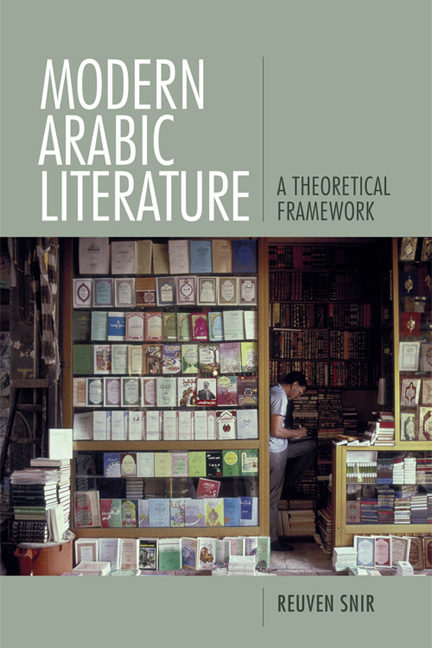Book contents
4 - Literary Dynamics in Generic and Diachronic Cross-section
Published online by Cambridge University Press: 03 January 2018
Summary
The study of the literary dynamics of Arabic literature in generic and diachronic cross-section aims at an investigation that is restricted to the historical development of each genre and the diachronic relationships between genres. Each genre, as well as each subgenre, should be examined in its own right and on its own terms, but the historical interrelationships and interactions that obtain between the components of the literary system are just as important. Any scholarly examination into this topic should take into account the developing innovations in and discussions of genre theory and seek to answer the question, “What is a genre?” It must also look into the transtextual and transgeneric writing and the intergeneric relationships in modern Arabic literature. Finally, it has to find an answer to the important question of periodization: How does one define a “literary period”? Just as any world history needs to divide up the temporal continuum and offer ways in which to trace the evolution of mankind, so too an examination of literature must of necessity schematize the history of its development. As has been shrewdly pointed out, “the division of history into periods is not a fact, but a necessary hypothesis or tool of thought, valid in so far as it is illuminating, and dependent for its validity on interpretation.” Also, as Frank Kermode argued in the late 1980s, “although periods are often detected long after they are over, it is not unusual for people to think they are actually in one; such is the case with the ‘Postmodernism’ of the present moment.” The methodological problems that arise from a definition of periods or movements in cultural history, such as those explained by E. H. Gombrich, need to be clarified and explicated. Therefore, we will have to look at how plausible some explanatory models of literary change are for our purpose― both literary and extra-literary. And we should not forget that our choices will inevitably be “controlled by the desires of the mind and even by the desire for power.”
- Type
- Chapter
- Information
- Modern Arabic LiteratureA Theoretical Framework, pp. 175 - 227Publisher: Edinburgh University PressPrint publication year: 2017



